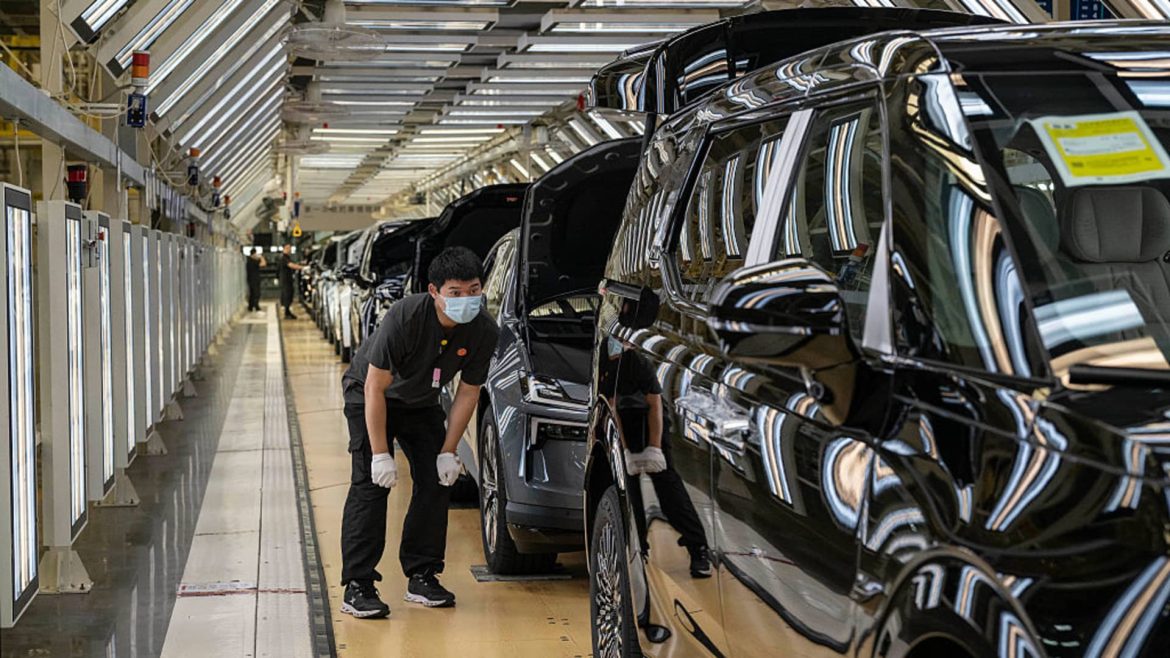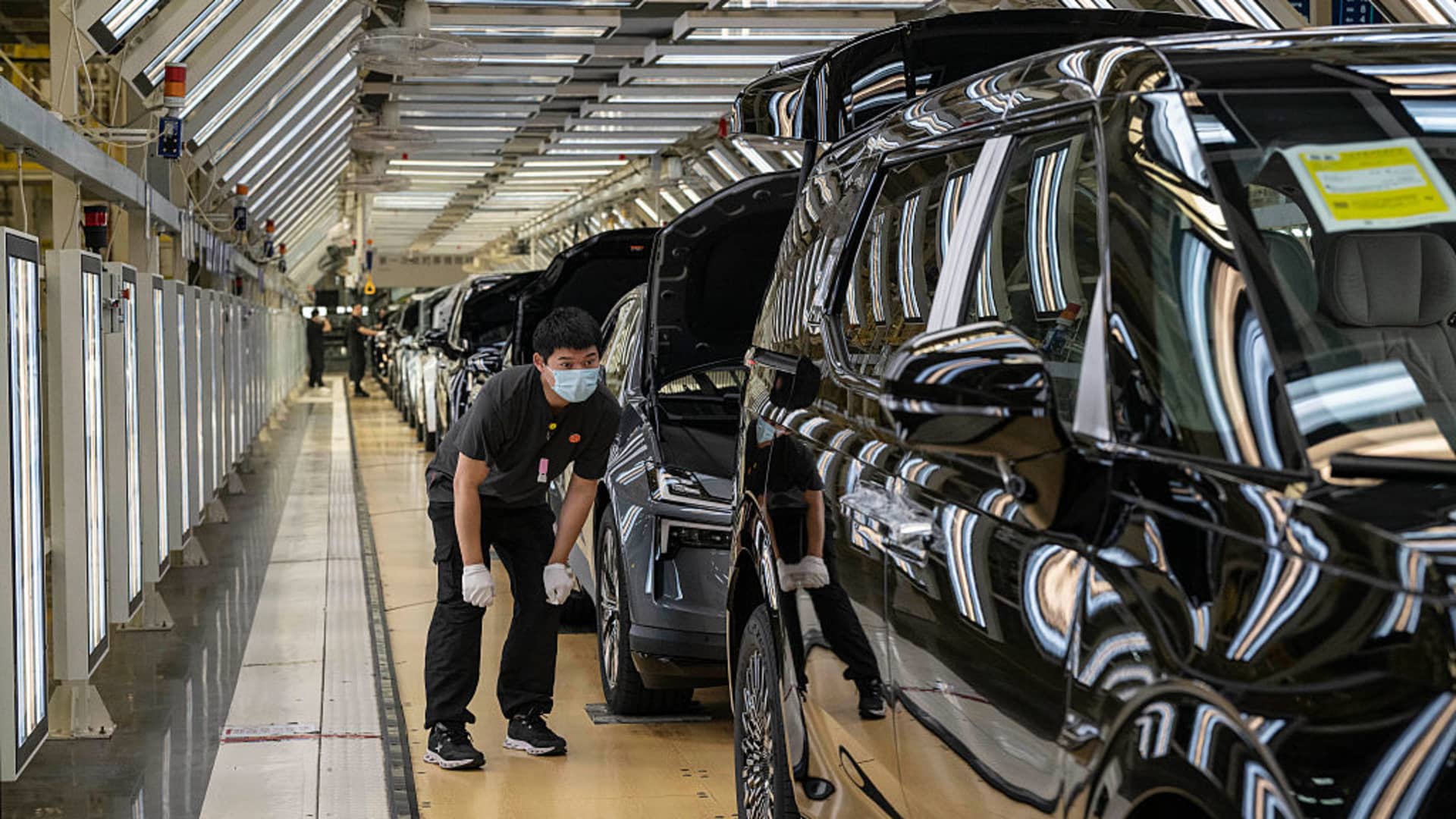China’s industrial profits have been on a tumultuous descent in 2025, with May’s 9.1% year-on-year plunge marking a critical juncture in the world’s second-largest economy. This decline is not an isolated event but a symptom of deeper structural challenges that have been brewing for some time. The implications of this downturn extend far beyond China’s borders, affecting global supply chains, commodity markets, and investor sentiment.
The decline in industrial profits is driven by a confluence of factors, each contributing to the overall economic malaise. Persistent deflationary pressures have been a significant contributor, with factory-gate prices remaining in negative territory for over a year. This deflationary environment squeezes profit margins, making it difficult for manufacturers to cover input costs or pass them on to consumers. The Consumer Price Index has also recorded its fourth consecutive monthly decline, indicating that deflation is not just an artifact of low demand but a signal of deeper structural imbalances.
External headwinds, particularly trade and tariffs, have further exacerbated the situation. Exports, traditionally a growth engine for Chinese industry, have faced new difficulties in 2025. US tariffs have led to the slowest export growth in three months, and the fragile “tariff truce” between the US and China has raised widespread apprehension about further escalation. For export-heavy firms, this has resulted in a double hit—reduced demand abroad and thinner margins at home.
Beijing’s response to the declining profitability has been to roll out policy stimulus, including relaxing credit, making infrastructure investments, and nudging state-owned banks to lend. However, the May data shows that these efforts have fallen short. The persistent decline in profitability signals that monetary easing and fiscal support have not shifted business sentiment or spurred enough activity to reverse the slump. Stimulus fatigue is setting in, with businesses hesitant to borrow and invest in an environment with weak demand signals.
The impact of the profit decline is not evenly distributed across sectors. High-tech manufacturing, new energy vehicles, and some consumer goods have shown pockets of resilience. However, heavy industry, raw materials, and traditional manufacturing are bearing the brunt of the pain. Revenue growth for industrial firms was 9.1% in the first five months of the year, but this masks wide performance gaps. Sectors exposed to global cycles or heavily reliant on domestic construction are struggling with overcapacity, inventory build-up, and low utilization rates.
Deflation’s double-edged sword is particularly evident in China’s industrial sector. Prices decline when people and firms expect them to keep falling, leading to delayed spending and investment. This self-reinforcing cycle drags on growth and makes it difficult for businesses to maintain margins. For policymakers, deflation is a challenging dragon to tame, as stimulus can put a floor under growth but cannot create the animal spirits needed for risky investments.
The global ripple effects of China’s industrial profit decline are significant. Industrial metals, a bellwether for Chinese demand, tumbled along with profits, with copper prices dropping 6.3% in May. Weak Chinese factory activity means fewer raw material imports, which in turn rattles producers from Latin America to Australia. China’s slowing export machine also creates ripple effects for trading partners up and down the value chain, with electronics, automotive parts, and heavy machinery providers in Asia facing softer demand and rising uncertainty.
The human angle of the profit slump is equally important. Squeezed margins encourage automation and output cuts, putting jobs at risk—especially for migrant workers in China’s vulnerable manufacturing hubs. Lower industrial profits mean less room for wage increases, diminished local government revenues, and tighter fiscal constraints. The social contract in China, reliant on steady employment and rising living standards, is tested during periods of industrial malaise.
The political stakes of the profit slump are high. Economic pain often finds its way into the political calculus, putting pressure on local governments to make tough choices about infrastructure projects and company bailouts. For Beijing, managing expectations—in both boardrooms and on the street—becomes paramount. An environment of persistent deflation and weakening business confidence risks fueling public anxiety and limiting China’s ability to serve as a global growth engine.
Reviving China’s industrial engine will require a multi-faceted approach. Boosting domestic demand through targeted transfers, easing property market policies, and steady job creation is crucial. Structural reforms, including overhauling inefficient state-owned enterprises and fostering a level playing field for private firms, are also necessary. Pushing further into high-tech, green energy, and the digital economy can create new profit pools, but scaling this up will take time and ambition. Navigating geopolitics, particularly in the face of tariffs and shifting global alliances, will require diversifying trading partners and making painful adjustments in exposed industries.
In conclusion, China’s 2025 industrial profit slide is a sobering gauge of broader economic hurdles—persistent deflation, sluggish demand, external shocks, and gnawing doubts about stimulus efficacy. The fixes ahead look more complicated than in past cycles. The world is watching not just for headline numbers but for signs of adaptation and reinvention. For China, finding a new equilibrium between growth and stability will demand creativity, grit, and some hard choices. For the global economy, how Beijing navigates this profit drought will ripple far beyond its borders, influencing markets, commodities, and geopolitical alignments for years to come. The real test of resilience starts now.





